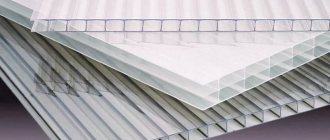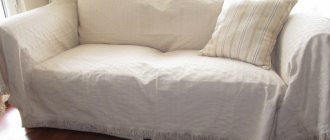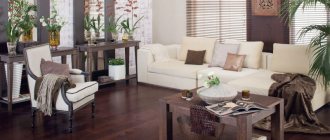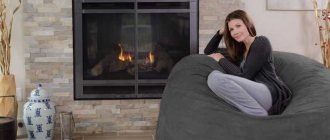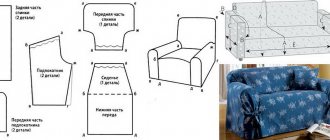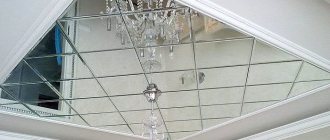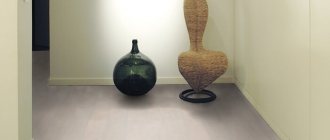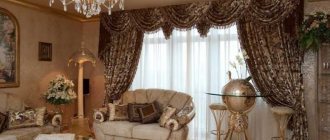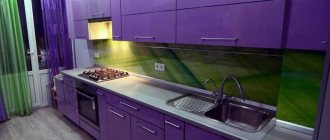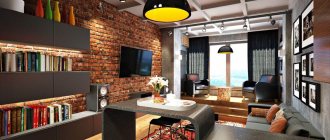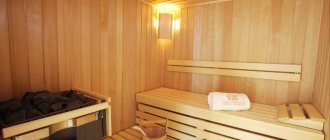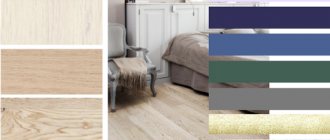Natural wood with its unique texture and cozy warm tones has long been used in Russia for floor and wall decoration. Over the past 15 years, products made from its Mediterranean “relative” - cork - have been gaining popularity among domestic buyers. In particular, cork flooring is gaining recognition among the masses not only due to its environmental component, but also due to the combination of operational properties of the material.
Description and features
In the manufacture of cork flooring, unique natural raw materials are used. Plants, namely cork oaks, grow mainly in Europe. The largest plantations (up to 33% of the world's reserves), well-established production are located in Portugal, as well as in Spain, the south of France, and Switzerland. Trees in some countries are protected by the authorities from unauthorized logging and are recognized as a state property.
Oak trees for processing must be 25 - 30 years old, then the trees will be able to restore the coating. The work of removing bark is carried out exclusively by hand; these are masterly manipulations of masters that do not harm the trees. Re-processing of trunks is possible after 8-9 years. Thus, with the right approach, raw materials are renewed.
Cork floor in the interior
Natural material is processed: crushed, granules heated in an oven, pressed. The result is a unique texture of cork sheets, similar to honeycombs. The mass called “suberin” contains crushed bark and air capsules. Increasing the additional height of the sheet increases the strength of the material. Varieties for decorative and other properties are obtained through many methods of further processing.
Cork flooring blends harmoniously with any style and does not lead to disappointment. The material retains its attractiveness and properties for 18 - 20 years. Doctors recommend sitting on a cork surface to get a healing effect on the skeletal and nervous system.
The eco-friendly coating retains heat and pleases with its original patterns. The top layer of veneer attracts with natural colors, conveys any pictures: imitates the pattern of stone, tiles, wood structure, pictures for children. Exclusive patterns and images are created using photo printing.
This is interesting: Pantry design: 6 ideas for organizing space (52 photos)
What it is?
Cork flooring is an environmentally friendly material, for the production of which the top layer of cork oak bark is used. This is a unique natural raw material: cork oak groves are found only in Europe. The method of removing the bark has non-standard specifics. The process requires exclusively manual labor. The task is carried out by virtuoso masters: careful and targeted actions are required to separate the top layer of bark from its mass, without causing harm to the tree itself.
Only thirty-year-old oaks (not younger) are used as donor trees. If the top layer is carefully cut off using technology, the bark continues to grow, and in 6 years it will replenish its reserves for a new portion of material. The natural harvest obtained from the tree is processed into cork slabs. They are the basis for creating a new floor.
The environmental friendliness of the slabs is guaranteed by their production. The bark is crushed and passed through heating in ovens for special processing. Then the resulting mass is compressed. Under pressure, the particles of wood cork are combined, creating a unique texture that looks like a honeycomb.
This is a fairly strong substance impregnated with air bubbles (suberin). To make the cork flooring material stronger and more practical, a second layer of suberin is added during production. Making a cork floor is an interesting design solution for decorating an apartment or house.
Natural cork has a beneficial effect on the human musculoskeletal system and nervous system.
Characteristics and dimensions
The plant material has excellent characteristics. In a honeycomb structure, each cell is an insulated chamber with walls that are resistant to the penetration of moisture and gases. Cork includes 90% air, the rest of the material is organic acids, which impart elasticity, strength, and moisture resistance.
The specific gravity of cork is comparable to the rarest balsa plant. In the old days, people appreciated the value of balsa wood, from which masts for ships were made, which provided waterproofness and protection from rotting.
Cork in roll
Interestingly, different types of cork floors hardly differ in properties:
- hypoallergenic;
- natural purity, harmlessness;
- high level of sound absorption;
- low thermal conductivity.
The best performance is found in class 33 cork laminate, which is explained by the multi-layer manufacturing technology:
- for balancing;
- for shock absorption, moisture protection;
- for an attractive surface.
The high-tech cork coating cannot be damaged by fallen objects or animal claws. Traces from furniture legs do not leave dents for a long time, the elastic surface is straightened.
Square or rectangular sheets (300 x 300 mm, 450 x 450 mm or 600 x 300, 450 x 150 mm) allow you to combine designs and create various patterns and ornaments. The interlocking cork floor consists of slabs 900 x 185 mm.
Cork does not attract dust, odors, or fumes. Cleaning with a vacuum cleaner or wiping with a damp cloth is sufficient. Washing liquids should not contain chemical solvents that threaten the texture and color of the coating.
Types of cork flooring:
- Tiles made from pressed cork chips
This type of coating boasts a variety of colors. The tiles are mounted with a special glue, after which they need to be coated with wax or varnish to extend their service life. Like PVC boards, cork boards come with and without chamfers;
- Cork laminate
As already written above, this is a multi-layer coating made according to all the rules for the production of laminate boards. Depending on the manufacturer, layers of decorative veneer, UV protection and other auxiliary coatings may be additionally applied to the cork laminate. The most popular decor for such a laminate is decor in the form of a cobweb, sea sand, as well as models of green meadow, sea pebbles, small shell rock;
- Cork board
In fact, this is cork in its purest form. This is the most expensive version of cork covering, which is made from solid veneer. Next, a vinyl film is applied on the back side, and a layer of varnish with increased strength characteristics is applied on the front side;
- Technomassive
This type of coating is also available. It is based on a high-density HDF board, covered on both sides with natural veneer 0.9 mm thick. On the bottom side, a thin layer of cork is glued to the veneer layer, and on the top layer of veneer you can apply absolutely any image (digital printing). After applying the image, the technomassive is covered with a layer of heavy-duty varnish;
- Cork base with lamellas
In this type of coating, lamellas are attached to a cork backing using an adhesive layer and covered with a protective layer of varnish or oil. Visually, this coating is similar to parquet, but its characteristics are still closer to cork flooring.
Kinds
Coatings from natural raw materials are made in the form of:
- slabs - sheet thickness 4 - 6 mm, thin plates are best placed on a plank base, which should be level. Adhesive cork flooring is the most harmless, waterproof, suitable for bathrooms and kitchens;
- parquet - slabs similar to laminate, connected with a lock. The cork layer is glued to the MDF base;
- rolls - the required footage is purchased to create a substrate. Cork flooring under linoleum compensates for defects in the base, gives elastic softness, and insulates the room. For the technical layer, the so-called agglomerate, or production residues, is used. Cork underlay on the floor is reliable protection from cold and noise.
Adhesive panels are more flexible. Just like interlocking sheets, sheets for gluing have a complex structure of cork veneer, pressed mass, and auxiliary materials. A novelty in modern finishing is a liquid coating obtained by conventional painting.
Cork floor in the living room
After drying, it becomes a porous surface and looks stylish. An option for applying liquid is spraying performed with a compressor. It is better to entrust the application process to professionals. Types of colors depend on the functional characteristics of the coating:
- beige shades visually expand the space;
- light color emphasizes purity;
- textures with imitation sand, pebbles are suitable for design delights;
- color photo printing changes the perception of space and adds brightness to the coating;
- stylization with natural texture suits classic interiors.
Types of cork coverings from various manufacturers are associated with technology and fashion trends. Thus, Italian cork is denser (up to 12 mm), the design pattern is worked out manually.
In Switzerland, with a standard thickness of 4 - 6 mm, craftsmen strive to improve the wear resistance of the material. Thus, cork flooring is used even in public institutions. Corkstyle cork flooring is available in a wide range of interlocking and adhesive boards.
Classes, sizes of cork: recommendations for use
To extend the service life of the plug, pay attention to its characteristics and wear resistance class. Each type of cork has its own strength class and must be used accordingly.
| Strength class | Premises where it can be used |
| 21 | Bedroom, study |
| 22 | Living room, children's room |
| 23 | Kitchen, hallway, corridor, loggia, balcony, covered terrace |
| 31 | Low traffic office |
| 32 | Office with average number of visitors |
| 41 | Industrial premises |
When producing cork panels, the following standard dimensions are accepted:
- rectangular block 600×300 mm, 450×150 mm;
- square tiles 300×300 mm, 400×400 mm, 450×450 mm.
The largest panel size is 120 cm in length, 18 cm or more in width.
When purchasing, be sure to pay attention to the reliability of the manufacturer. Proven production companies have been operating in the construction market for many years, which guarantees the quality of their products.
Laying
In installation technology, one of the most important conditions is laying the cork floor on a level surface. A wooden, metal or concrete base or gypsum screed is suitable, which should be free of cracks and bumps.
General recommendations:
- after purchase, the material must be kept for about a day in the room where installation work is planned;
- if there is a pattern, you need to work in advance to adjust the pattern;
- Remains of glue and small debris should be removed immediately.
Laying different types of cork flooring has its own nuances.
Sheet covering
The process of gluing the plates must be carried out from the center to the walls. Determining the place to start working is easy with the help of threads if you stretch them along the diagonals of the room. After marking is completed, a thin layer of glue is applied first to the tile, then to the base. Further, according to the recommendations, you need to wait 20-40 minutes, and then connect the surfaces.
After gluing, the tiles are carefully tapped with a rubber hammer. It is more convenient to join sheets if you first bend the sheet in an arc and then press it to the base. When installing, maintain a 5 mm gap between the edge panels and the wall.
It is better to use moisture-resistant glue, especially for laying floors in wet rooms. Finally, 2-3 layers of varnish are applied to the coating, which protects it from damage and moisture.
Sheet cork covering
Castle coating
Laying does not require a strong connection to the base; if necessary, the floating floor can be disassembled. To improve the quality of the coating, use a substrate that protects against dampness and smoothes out unevenness.
The panels are installed from right to left. The ends are fixed at an angle of 30° to the laid sheet. It is recommended to start laying the second row with the panel located at the end of the first strip. A sealant is used to treat joints.
Interlocking cork covering
Technical substrate
Laying working cork requires maintaining 15 mm gaps between the wall and the tiles. It is allowed to use PVC film to protect the coating from moisture. The pieces are laid and secured with tape.
Technical cork backing
This is interesting: Console table: design and functionality (36 photos)
Cork panels for walls: simple installation tips
There are certain rules for gluing cork panels to walls. First of all, it is necessary to thoroughly prepare the surface. It should be dry and perfectly smooth, without roughness. First you need to remove all remnants of the previous finish, seal the cracks and level the walls with plaster. In addition, the surface should be treated with a primer and allowed to dry completely.
Harmonious combination of natural shades in a modern interior
Rolls of cork are cut and left for a while to straighten. Using a level, make markings on the wall.
What kind of glue to use to glue the panels to the walls depends on the type of cork covering. For cork wallpaper on a non-woven or paper base, the same composition is used as for ordinary wallpaper.
Cork wall panel adhesive has a very thick consistency. Therefore, it must be applied using a comb or spatula, and often the glue must be applied to both the wallpaper and the wall.
Cork wallpaper does not absorb dust and dirt, does not fade and practically does not wear out
You can stick a cork panel on the wall (a photo on the Internet describes this process in detail) alone. But in order to cope with cork wallpaper, you will need help. They must be pressed firmly against the surface, while being leveled with a roller to prevent the formation of air bubbles. If this cannot be avoided, it is better to pierce the bubble with an awl. Glue the wallpaper end-to-end, carefully removing excess with a knife. Using a knife, remove the glue that appears at the joints.
Cork panels must be allowed to dry. This will take three days, and the doors and windows to the room must be closed.
In rooms with high humidity, cork panels impregnated with special water-repellent resins are used.
To facilitate the installation process and avoid the most common mistakes, you can watch the video on the Internet: “How to glue cork panels to walls.”
Most often, cork panels are painted in natural tones, reminiscent of wood.
Advantages and disadvantages
The main advantages of such floors include:
- strength and elasticity: after loading, the surface tends to return to its original state;
- natural, environmentally friendly, therefore do not cause allergies;
- exceptional insulating qualities: do not allow cold to pass through, feel warm to the touch;
- due to the structure they perfectly absorb unnecessary sounds;
- are not afraid of moisture and do not rot, which is why they are even suitable for the bathroom;
- The design of cork floors often becomes exclusive due to the variety of shades and textures.
Not without its drawbacks:
- do not withstand point impact: furniture legs require pads, and stiletto heels are best removed;
- sensitive to abrasive effects: harder particles (debris) are sometimes pressed in;
- natural, high-quality material is always expensive;
- It is recommended to invite a good specialist for installation.
Where does cork come from and where does it live?
Cork oak is a perennial evergreen tree, introduced almost throughout the Mediterranean: Portugal, Spain, Italy, France, Morocco, etc. Its bark is considered a valuable raw material for the production of shoes, corks for sealing vessels, heat and sound insulating materials, as well as products for interior and exterior decoration of civil, commercial and public buildings.
The bark is removed every 10-12 years. Products from young trees over 25 years old are used for the production of cork chips, while smoother, without pronounced veining, raw materials from oak trees over 80-90 years old are suitable for the production of decorative coatings and crafts.
Cork tree bark.
The structure of the cork resembles a honeycomb filled with a mixture of oxygen and nitrogen. Thanks to this, bark products are characterized by a whole range of advantages:
- light weight;
- lower thermal conductivity and noise dissipation than wood;
- a kind of springiness;
- relative stability, due to which cork products treated with protective agents can be used in damp rooms;
- ability to restore shape;
- low level of water absorption;
- antistatic;
- a good coefficient of slip resistance, corresponding to approximately R10;
- ease of use.
Cork oak bark is a valuable, rare, and therefore expensive raw material. Therefore, manufacturers have developed ways to save money:
- Cutting veneer sheets from pieces of bark. These are layers no more than 1 mm thick, which are glued to a solid base made of HDF boards, chipboard, composite PVC, etc.
Cork veneer.
- Pressing cork chips. The bark is crushed, combined with thermosetting polymer compounds and goes through a heat-pressing stage. The resulting agglomerated blocks are cut into slabs of a given thickness and decorated in various ways: veneering, painting, varnishing, photo printing, etc.
Cork agglomerate from crumbs.
What is the structure of cork?
It is the internal structure of this material that determines all its useful properties, which are appreciated by designers and master builders.
Cork is mainly composed of cells filled with gas, due to which it has:
- elasticity;
- ease;
- elasticity;
- poor thermal conductivity;
- high soundproofing properties;
- ability to dampen vibrations;
- durability.
Cork properties
Cork is such a pleasant and practical material that a huge number of things are made from it and are used in many areas of modern industry.
The structure of the cork is porous. The most interesting thing is that the pores are not empty, but filled with harmless gas. It seems that nature itself made sure that people began to use it to arrange their lives. After all, such a natural structure has a lot of useful properties.
The most obvious of them are thermal insulation and sound insulation.
In the first case, this is an ideal flooring material. The cork floor does not need heating, because it itself is warm. In addition, it does not let in the cold from outside. Therefore, cork underfloor heating also allows you to save money intended for the screed heating system.
Secondly, thanks to the same honeycomb structure, cork has good soundproofing properties. It itself does not produce ringing sounds when exposed to it, and is also a good noise absorber.
A material becomes elastic when it contains pores. Therefore, cork on the floor is also pleasant precisely because of its shock-absorbing qualities. Unlike other floor coverings, this characteristic is truly unique for it. Navigating through it is pleasant, easy and useful. After all, this massages the musculoskeletal system.
Cork in the interior has other household advantages that are not obvious at first glance.
- Does not accumulate static electricity
- Does not absorb odors
- Not sensitive to household chemicals
- Cork flooring is non-slippery
- Unique floor design
- Cork does not support combustion
- Natural eco-friendly material
If you are purchasing economy class cork floors, then you should pay attention to the following brands:
Aberhof
A dynasty of flooring manufacturers from Germany that appeared in the mid-50s of the 20th century. The brand's production is concentrated in different countries. Aberhof cork floors are made in Portugal. The products of this brand have excellent performance characteristics and are manufactured using modern European equipment based on materials of natural origin.
Maestro Club
German manufacturer of cork flooring, famous for its Maestro Rondo line. Under the name Maesto Club, 11 manufacturing companies across Europe are gathered. The company guarantees the high quality and safety of its products
Easy Cork
This is not a brand, but a collection of a large manufacturer of cork flooring - the company Ibercork, which we will talk about later. The collection includes colored cork laminate with a variety of decors
CorkArt
A Portuguese company with an extensive network of representative offices throughout Russia, specializing in the production of cork products: floor and wall coverings, underlays and technical products. The company promotes cork as a highly environmentally friendly and biodegradable material
BFM Cork
A Portuguese brand offering cork laminate with 33 wear resistance classes. High-density cork, 2-3 mm thick cork veneer, wear-resistant elastic varnish, “Corkloc” adhesive-free joining system (wax-treated locks) – this is what makes BFM Cork a competitive representative of the cork flooring market
Corksribas
Portuguese manufacturer of adhesive and non-adhesive cork. The company was founded in 1980 to produce technical cork, but later began producing flooring, interlocking cork laminate, anti-slip cork, acrylic cork laminate and many other types of cork flooring. Modern designs, high quality and extensive experience in cork production - this is all Corksribas
Cork on the floor - what is it like?
There are only two types of cork you can buy in a flooring store or hardware store. Design has nothing to do with it, it’s about the structure and method of installation. Structurally, this material is divided into two types: three-layer and single-layer.
Castle
In the first case, the coating basically contains the same board as used in laminate - HDF. It is on this that the Click locking system is milled. Thanks to it, installation is carried out using the “floating” method. A thin layer of cork is glued to the bottom of the base, which serves as a backing. And on top there is the same layer, but thicker and with decorative processing.
The surface is usually treated with wear-resistant varnish. In some cases, corundum and fine aluminum chips are added to it. This increases the degree of abrasion.
Decoration is done by painting, gluing or photo printing. Thanks to the latter method, manufacturers began to produce cork flooring that imitates various surfaces: wood, leather, stone. Before this, the design of cork was quite specific - plain, cellular, striped or speckled. Which was not always suitable for the interior.
Glue plug
The adhesive plug in the interior is visually no different. But the structure is much simpler. This is a single-layer material with a thickness of 4-6 mm and consists entirely of initial raw materials. It is installed by gluing to the base. For these purposes, special glue is used. The top of the material needs to be treated with varnish. According to the technology, two layers with sequential drying are sufficient.
Cork floor in the interior
The adhesive technology for laying flooring in the interior allows for installation without connecting joints throughout the entire area of the apartment. But an important feature of this installation is that the cork can also be installed in the bathroom in this way. You just need to make high-quality waterproofing of the base and thoroughly treat the surface and all joints of the cork sheets with waterproof varnish. Thus, it will be possible to create a warm, pleasant floor in the room.
The locking plug should be laid on a pre-leveled base with a waterproofing layer. It is allowed to lay 7-10 meters in a single sheet.
When using a cork in the interior, you should still adhere to certain rules.
- Do not place hot objects on the varnish surface: iron, frying pans and pots only after they have been removed from the heat.
- Spilled caustic liquids, including markers and felt-tip pens, should be cleaned up immediately.
- Protective felt stickers must be placed on the legs of all furniture that can be moved.
Types of cork floors
- Very expensive solid cork veneer , or cork board (cut of cork oak peel), covered with wear-resistant varnish. Do not confuse it with school cork boards. A completely environmentally friendly material, it combines both excellent advantages and very big disadvantages of cork. Can be produced in large (up to 6 sq. m) layers 4-6 mm thick and in rolls; also in the form of tiles. Often its underside, not the outer side, is protected with a vinyl-based film, which makes it easier to paste and lay on a concrete floor.
- MDF panels with cork . Material averaged by price category. It is also sometimes called a cork board, although in reality it is a laminated parquet made of cork: a base of MDF, then a layer of cork chips, also processed using MDF technology (dry hot pressing), and on top - a layer of 2-4 mm cork veneer, protected with varnish and/or vinyl-based film. In terms of useful qualities, it is actually equivalent to integral veneer, but is not so demanding on the quality of the underlying plane.
- Laminated cork parquet is available in the usual size and thickness for laminated parquet.
- Pressed cork chips. It is used to make affordable cork tiles . In implementation, it is easy to recognize by its fine-grained structure, similar to a cork from an inexpensive wine. The color palette of the entire cork consists of complex figures of complex shapes in yellow-brown tones. But still, cork tiles provide a coating that is not much inferior in quality to that of solid veneer. For an inexpensive cork-based floor, this is an ideal option. Important sizes of cork tiles are 30x30, 60x60 and 60x90 cm. In sales, under the appearance and cost of tiles, you can find scraps and scraps of whole veneer. They are small, but if you have the desire, time and aesthetic taste, you can get such a coating from them that experienced, knowledgeable people will gasp.
Advantages and disadvantages
Cork flooring has many undeniable advantages. Despite the fact that its price is higher than that of common laminate, it is a profitable and useful material:
- Cork is environmentally friendly. The material itself, as well as the process of its production, is natural.
- The coating has high antistatic characteristics. The surface is not covered with dust, which is important for people prone to allergies.
- Cork does not release toxic substances when heated. Fungus does not form on it, so a cork floor would be appropriate in a bathroom.
- Valuable quality - high sound insulation. Cork covers dampen noise on the ceiling, walls and floor. If something falls on such a floor, the ringing and rumble is practically inaudible, which is why cork cladding is used in recording studios.
- Cork floors have good thermal conductivity. No one can deny themselves the pleasure of walking on such a floor barefoot. There is a feeling that a “warm floor” system is installed under the plug. The elastic cork seems to spring back when walking, reducing overall stress on the body.
- To install cork slabs or a package, no special skills are required. This is a fairly simple and inexpensive procedure.
- The cork is easy to clean. You can do wet cleaning or clean the surface with a vacuum cleaner.
- This is an extremely durable material that can last from 10 to 40 years. After assembly, the floor is ready for use.
- Cork coverings are not afraid of temperature changes; it is logical to lay them in dachas, balconies, verandas, and loggias.
- It has a high coefficient of friction, making it impossible to slip on such a floor.
How is oak bark turned into flooring?
This is done in different ways. Or rather, the technology used is always similar, but there are differences in the quality of raw materials and costs. By the way, from the removed cork they make not only coverings for floors, but also for walls and ceilings too. So, the following options are possible:
- Solid veneer obtained from cork wood. This is the most expensive coverage. When using it in order to form one collection, selection is made according to the color and texture of individual floorboards.
- Agglomerate. This is pressure-pressed cork chips. It is sintered under high heat to produce a solid material. This is the cheapest option, since any, even the smallest fragments of cork are used.
- Combination of agglomerate + veneer. A price-compromise solution. In this material there are parts of veneer mixed with small pieces of cork.
A little more detail needs to be said about the agglomerate. Both the wear resistance and other mechanical properties of the two types of agglomerate from large and small crumbs do not differ. Externally, they are also poorly distinguishable. Since plasticizers are used to obtain such a material, it, of course, is significantly inferior to veneer in environmental matters.
Original interior solutions
To make the interior of a room original, use several types of flooring. Bold combinations of laminate and floating tiles, creating original patterns and contrasts, can be used to zone a living room or bedroom.
Cork material naturally varies in color and grain size, which can be used to create floor designs. The dark curly elements of the coarse-grained cork and the light, fine-grained base material will create a surprising contrast. This option can be used for a living room, the interior of which used dark wood furniture and light decorative elements.
The newest flooring option is photo-printed cork.
A thin layer with the texture of any natural material - marble, granite, wood and the like - is applied to a cork base. This layer is covered with three layers of protective varnish. The result is a floor covering with enhanced characteristics, more resistant to mechanical damage and moisture.
Related article: How to choose plaster for leveling walls and ceilings
